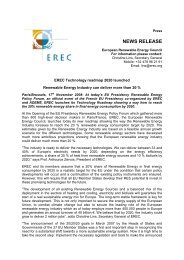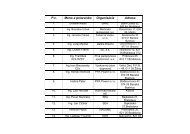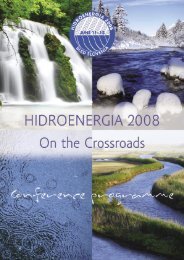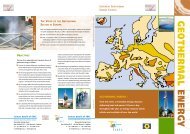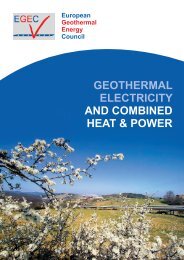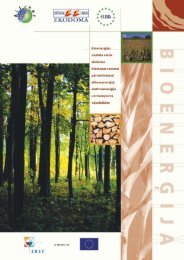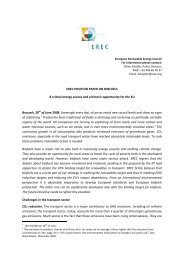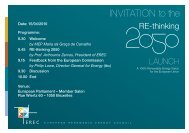CTO Assessment - European Commission
CTO Assessment - European Commission
CTO Assessment - European Commission
You also want an ePaper? Increase the reach of your titles
YUMPU automatically turns print PDFs into web optimized ePapers that Google loves.
EL HIERRO<br />
100% RES<br />
A Biosphere Reserve island<br />
Contact: Gonzalo Piernavieja • Canary Islands Technological Institute (ITC)<br />
Playa de Pozo Izquierdo s/n. • 35119 Santa Lucía<br />
Gran Canaria • Spain • Tlf: +34 928 727505 • Fax: +34 928 727517<br />
E-mail: gpiernavieja@itccanarias.org• Website: www.itccanarias.org<br />
The island of El Hierro, Canary Islands<br />
(Spain), declared a Biosphere Reserve by<br />
UNESCO in 2000, has an area of 276<br />
km², a population of approximately 10.000<br />
inhabitants, and is not connected to a continental<br />
electricity grid. Currently, the electricity<br />
demand is covered by a conventional<br />
thermal power station (diesel system:<br />
8’285 MW). The island has a big RES<br />
potential, mainly wind, and wants to implement<br />
a 100% RES project for its energy<br />
supply. In order to reach this objective<br />
3 different programmes are to be implemented:<br />
Energy Saving Programme<br />
The “100% RES for Electricity<br />
Production” Programme<br />
The Transport Programme (conversion<br />
from Fossil Fuels to Clean Transport)<br />
With the financial support of the DG TREN<br />
of the <strong>European</strong> <strong>Commission</strong>, a consortium<br />
of 7 partners, coordinated by ITC<br />
(Instituto Tecnológico de Canarias), will<br />
carry out a project that will focus on the<br />
“100% RES for electricity supply” programme,<br />
which aims, in a first phase, at<br />
covering 70-80% of the electricity demand<br />
of the island by means of several actions.<br />
The set objective can only be reached by<br />
the integration of several RES. In this context<br />
the following actions are in focus:<br />
Implementation of a Wind - Pumped<br />
Hydro Power Station (with the target of<br />
covering 75% of the island’s electricity<br />
demand and achieving 30% direct wind<br />
penetration into the grid)<br />
Implementation of a Solar Thermal Energy<br />
Programme<br />
Implementation of a PV Roof Programme<br />
Implementation of a Biofuels Programme<br />
Main motivations<br />
The bet on a strategy aiming at the attainment<br />
of a 100% RES island already appears<br />
within the Sustainable Development<br />
Plan of the island, supported by UNESCO,<br />
which defends an advanced concept of Biosphere<br />
Reserve as an insular development<br />
model and laboratory. The Reserve is characterised<br />
by a high degree of participation<br />
of the local population in the strategic decisions<br />
affecting development, where energy<br />
options are linked to the productive<br />
model, to the integral exploitation of endogenous<br />
resources, and to population’s<br />
quality of life.<br />
Hundreds of <strong>European</strong> islands (with more<br />
than 5 million inhabitants), and thousands<br />
of islands worldwide, could benefit from<br />
the results of this project. As a consequence<br />
of the foreseen actions, the following results<br />
are expected:<br />
Reduction of GHG emissions<br />
Increase of life quality on islands<br />
Increase of energy independence on islands<br />
Demonstration of the fact that RES integration<br />
is a way of providing 100%<br />
energy supply on isolated islands<br />
Demonstration of the fact that synergies<br />
between RES (e.g. combination of wind,<br />
hydro, solar, etc.) can highly contribute<br />
to increase RE penetration into weak<br />
grids in isolated areas<br />
Demonstration of the fact that pumped<br />
water storage is an economic way of<br />
accumulating energy<br />
Optimisation of the available potential<br />
of RES using them together in integrated<br />
systems for local power supply<br />
Innovation<br />
The most innovative part of the project<br />
from the technical point of view is the Wind-<br />
Hydro power station (WHPS). This is an<br />
innovative concept of combination of 2<br />
RES: wind and hydro power, using the<br />
water as energy storage. The system overcomes<br />
the usual problems of intermittency<br />
(discontinuity) and power fluctuations<br />
caused by the random character of the wind<br />
resource and, thanks to the potential energy<br />
storage (pumped water) and the controllable<br />
power output of hydro turbines,<br />
can establish a stable grid in terms of frequency<br />
and voltage. This is the first experience<br />
world wide of a WHPS that will provide,<br />
on a yearly basis, approx. 75% of the<br />
electricity demand of an isolated area and,<br />
in some months (like in June, July and<br />
August), 100% of the electricity demand.<br />
Another innovating aspect is the creation<br />
of a utility for the development of the 100%<br />
RES Hydro-Power project. Consistently<br />
with the strategy set in the Reserve, an<br />
important part of the new company’s<br />
shareholders are within the local population,<br />
the others being the former utility and<br />
the Cabildo (Local Government).<br />
Replication<br />
An important part of the project is devoted<br />
to the construction and monitoring of the<br />
WHPS on El Hierro, but also feasibility<br />
studies for WHPSs on Crete and Madeira<br />
will be elaborated and potential for other<br />
islands will be assessed. Furthermore, aspects<br />
concerning integration and involvement<br />
of the island population in the foreseen<br />
actions (in order to guarantee acceptability<br />
of RES) will be addressed. In order<br />
to try to replicate the project, emphasis<br />
will be put in identifying islands that could<br />
benefit from this kind of systems and also<br />
in elaborating a dissemination plan.<br />
The project demonstrates that, in conditions<br />
of liberalisation and for isolated areas<br />
with acceptable resources, the RES<br />
option is viable and competitive.<br />
<strong>CTO</strong> - Showcase<br />
75



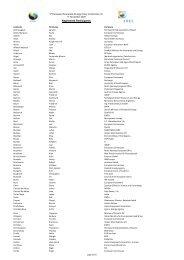
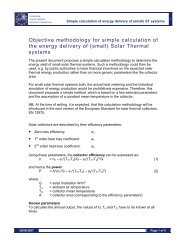
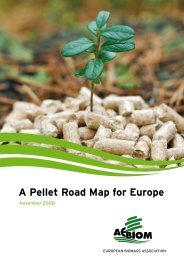
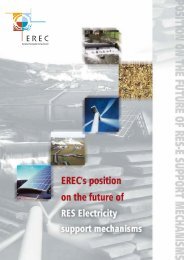

![Energy [R]evolution - Greenpeace](https://img.yumpu.com/47174859/1/184x260/energy-revolution-greenpeace.jpg?quality=85)
